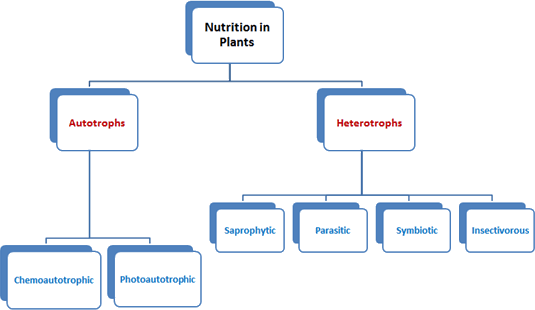Table of Contents
Nutrition in Plants
Plants are able to produce their own food through a process called Photosynthesis, which takes place in the chloroplasts of plant cells. During photosynthesis, the energy from sunlight is used to convert carbon dioxide and water into glucose (a type of sugar) and oxygen.
Plants also need certain nutrients to grow and thrive. These nutrients can be absorbed through the soil, water and air. The most important nutrients that plants need are:
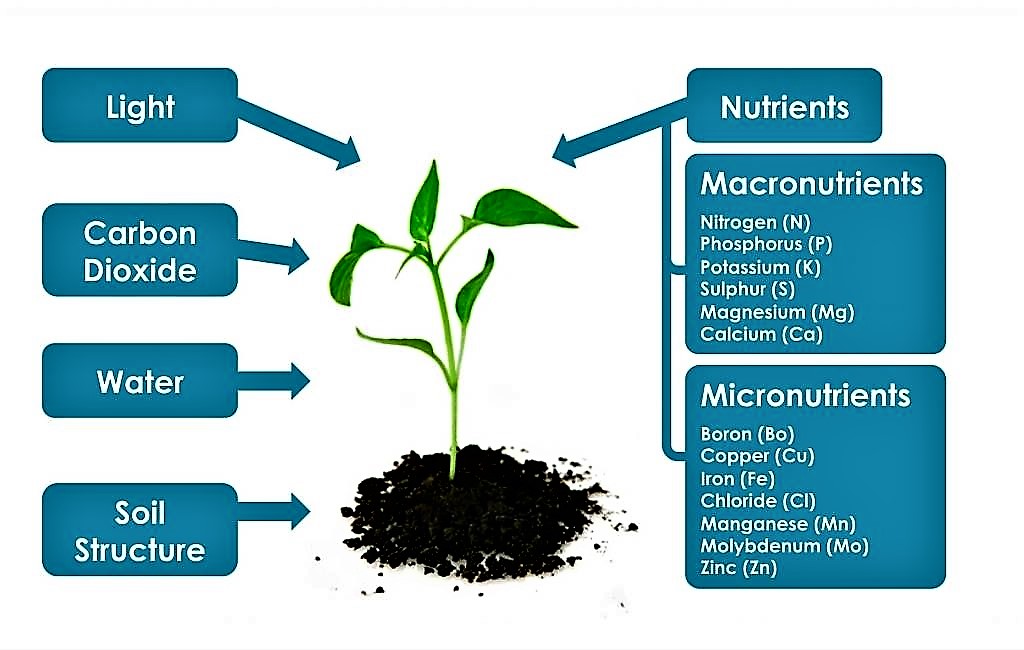
- Carbon – Carbon is a vital element for plants as it is a major component of carbohydrates used for energy production and cell construction. Carbon dioxide is absorbed from the air through the process of photosynthesis.
- Nitrogen – Nitrogen is essential for the synthesis of proteins and other important compounds in plants. It is absorbed from the soil in the form of nitrates and nitrites.
- Phosphorus – Phosphorus is important for the development of strong roots, flowers and seeds and is involved in the synthesis of DNA and RNA. It is also necessary for the synthesis of ATP, the energy molecule of plants, and is often found in the soil in the form of phosphates.
- Calcium – This element is important for the growth and development of plant cells and is involved in the synthesis of cell walls and membranes. It is often found in the soil in the form of calcium ions.
- Potassium – Potassium is involved in the regulation of water balance, enzyme activity and the synthesis of proteins and starch.
- Magnesium – Magnesium is necessary for the synthesis of chlorophyll, the pigment responsible for photosynthesis. It is also involved in the production of ATP and the synthesis of proteins and nucleic acids and is often found in the soil in the form of magnesium ions.
In addition to these main nutrients, plants also need trace elements such as iron, zinc and copper. These minerals are often found in small amounts in the soil and are essential for proper plant growth and development, but may be lacking in certain areas, leading to deficiency symptoms in plants.
Also Check – Where do Plants get each of the Raw Materials required for Photosynthesis
3 Important Types of Nutrition in Plants
There are three main types of nutrition in plants:
- Autotrophic Nutrition: where plants produce their own food through the process of photosynthesis. They use energy from the sun, water and carbon dioxide from the air to produce glucose, which is then used for energy and growth.
- Heterotrophic Nutrition: This is when plants obtain their nutrients from external sources, for example through symbiotic relationships with fungi or bacteria, or by obtaining nutrients from dead organic matter.
- Parasitic Nutrition: This is when plants obtain their nutrients from living organisms, often by attaching themselves to the host plant and extracting nutrients from its tissues.
Also Check – What is Holozoic Nutrition?
Also Check – Holozoic Nutrition Example
Autotrophic Nutrition in Plants
Autotrophic nutrition refers to the process by which plants produce their own food using energy from Sunlight and Inorganic Raw materials.
Autotrophic Nutrition is important for plants because it allows them to produce their own food and survive in environments where there is little or no access to other sources of nutrients. It also plays a crucial role in the carbon cycle, as plants absorb carbon dioxide from the atmosphere and convert it into organic matter. This helps regulate carbon dioxide levels in the atmosphere and mitigate the effects of climate change. They are also important for the entire ecosystem, as plants are a source of food for animals and contribute to the production of oxygen in the atmosphere.
2 Important Types of Autotrophic Nutrition in Plants
There are two main types of Autotrophic Nutrition in Plants –
- Photosynthesis
- Chemosynthesis.
Also Check – 2 Important Types of Autotrophic Nutrition
Photosynthesis
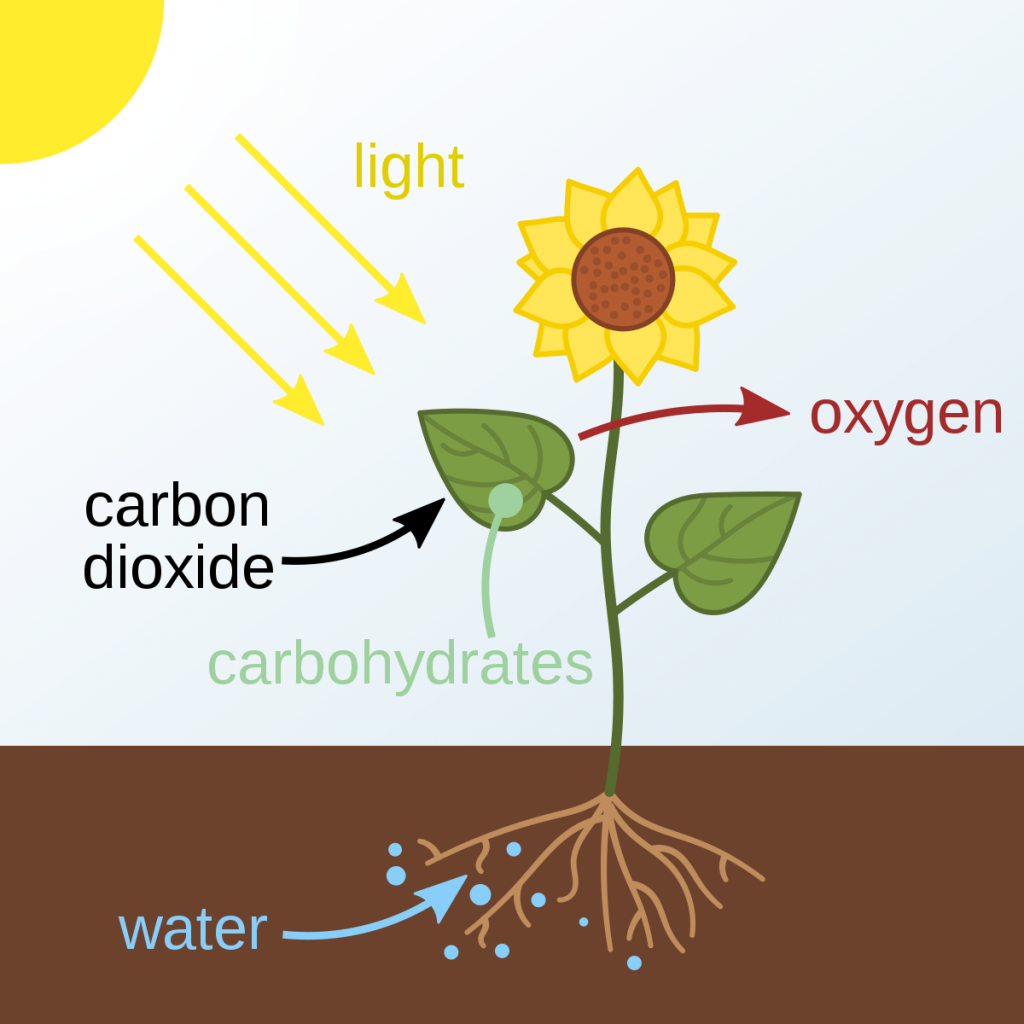
- Photosynthesis is the process by which plants use the energy of sunlight to convert carbon dioxide and water into glucose (a type of sugar) and oxygen. This process takes place in the chloroplasts, which are located in the cells of the plant leaves.
- During the process of photosynthesis, the plant absorbs light energy and uses it to convert carbon dioxide and water into glucose through a series of chemical reactions. Oxygen is produced as a by-product of photosynthesis.
- Plants need a variety of nutrients, including nitrogen, phosphorus and potassium, to support this process and grow properly. Without adequate nutrients, plants have a lower photosynthetic rate and can become more susceptible to diseases and pests.
- Photosynthesis is essential for the survival of plants as it provides them with the energy to grow and reproduce.
Chemosynthesis
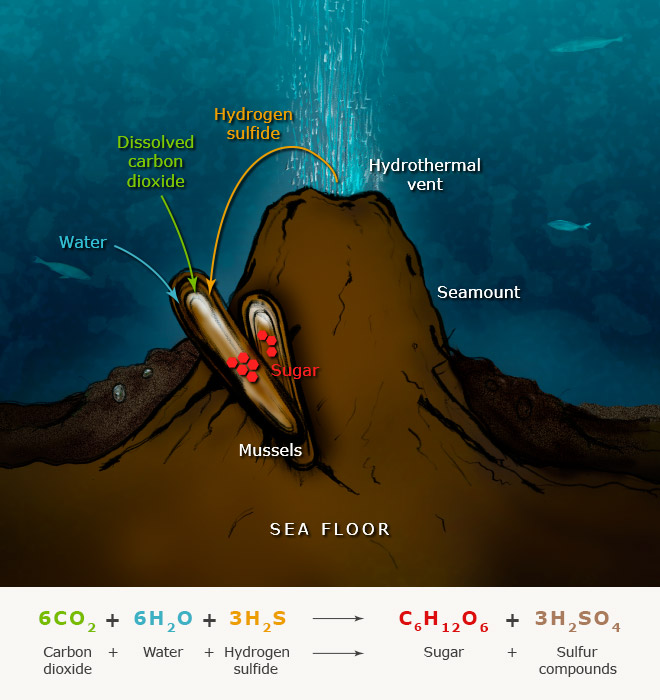
Chemosynthesis is a type of autotrophic nutrition found in certain species of bacteria and archaea that involves the use of energy from chemical reactions to produce food. Chemosynthesis does not require sunlight and can occur in environments where light is not available, such as the deep sea or underground caves. Some plants, such as mangrove and cycad species, are able to obtain energy through chemosynthesis in addition to photosynthesis.
Also Check – Steps of Photosynthesis
Also Check – 7 IMPORTANT FACTORS AFFECTING PHOTOSYNTHESIS
Also Check – What are the Adaptations of leaf for Photosynthesis
Heterotrophic Nutrition in Plants
Heterotrophic Nutrition in plants refers to the process by which plants obtain their nutrients from external sources rather than producing them through photosynthesis. This can occur through several methods including:
- Parasitism – In this type of nutrition, plants obtain their nutrients from living hosts, such as other plants or animals. The plant secretes enzymes that break down the host’s tissue and absorb the nutrients. Examples of parasitic plants are mistletoe and dodder.
- Saprophytism – This type of nutrition occurs when plants absorb nutrients from dead organic matter, such as fallen leaves or animal carcasses. The plants secrete enzymes that break down the organic matter into simpler compounds that are then absorbed by the plant. Examples of saprophytic plants are fungi and certain species of orchids.
- Symbiosis – Some plants, such as legumes, form symbiotic relationships with nitrogen-fixing bacteria in their roots, allowing them to obtain nitrogen from the atmosphere.
- Mycotrophic nutrition – This type of nutrition occurs when plants form symbiotic relationships with fungi, whereby the fungi provide nutrients to the plant in exchange for a carbohydrate source. The fungi colonise the plant’s root system and form a mycorrhiza, which allows the plant to absorb nutrients from the soil more efficiently. Examples of mycotrophic plants are pines and certain species of orchids.
Overall, heterotrophic nutrition of plants is important because it allows them to survive in nutrient-poor environments or when they are unable to produce sufficient nutrients through photosynthesis.
Also Check – 10 Important Differences between Autotrophic Nutrition and Heterotrophic Nutrition
Types of Heterotrophic Plants
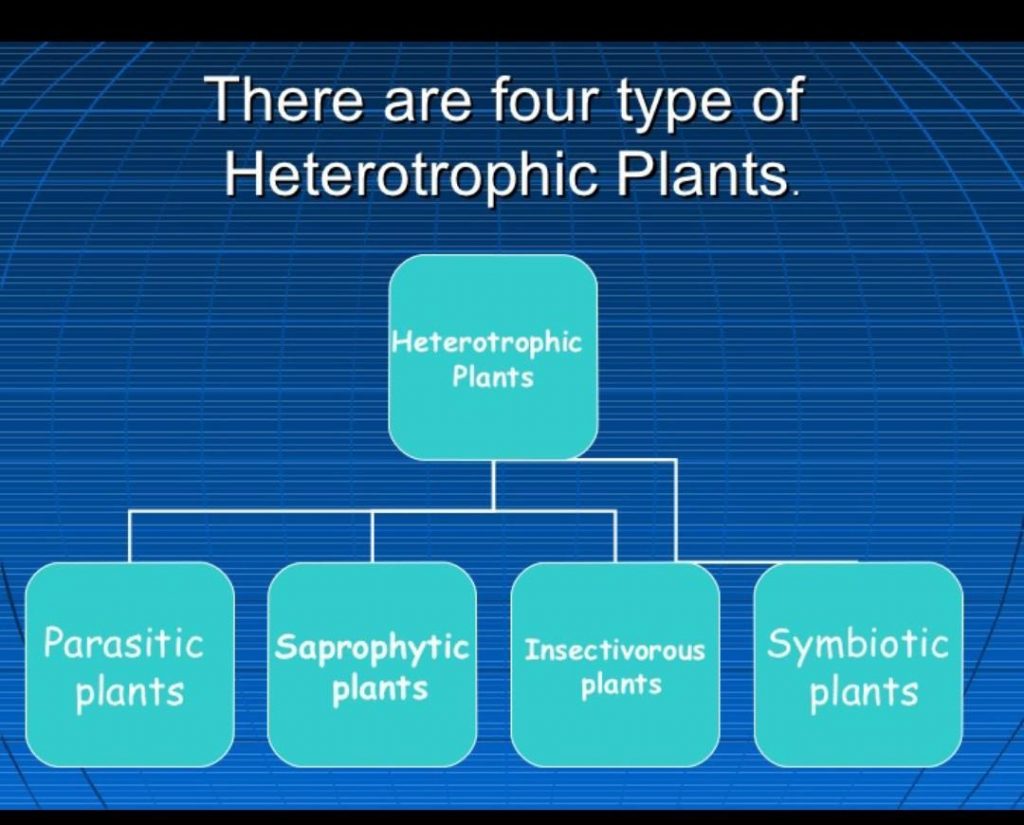
- Carnivorous plants – These plants obtain their nutrients from other living organisms, usually insects, by catching and consuming them. Examples are the Venus flytrap, pitcher plant and sundew.
- Parasitic plants – These plants depend on other plants or animals to meet their nutrient and water needs. They do not produce their own food through photosynthesis, but obtain their food from their host plants or animals. Examples include mistletoe, dodder, and broomrape.
- Saprophytic plants – These plants obtain their nutrients from dead and decaying organic material. They do not require sunlight for photosynthesis to survive and are often found in areas with low light, e.g. in forests under the canopy or in caves. Examples include mushrooms, toadstools and truffles.
- Myco-heterotrophic plants – These plants are similar to saprophytic plants in that they obtain their nutrients from fungi but also have the ability to photosynthesise. They form symbiotic relationships with fungi so that they can obtain both nutrients and energy from the sun. Examples are the Indian pipe and certain orchids.
Also Check – Nutrition in Human Beings Class 10
Parasitic Nutrition in Plants
Parasitic nutrition in plants refers to the way some plants get nutrients from other plants. These plants are called parasites. They use special organs called haustoria to invade the host plant and take water and nutrients.
There are two main types of parasitic plants:
- Holoparasites – Holoparasites are completely dependent on their host plant for nutrients and have no chlorophyll, i.e. they do not photosynthesise.
- Hemiparasites – Hemiparasites are able to photosynthesise but are still dependent on their host plant for additional nutrients.
Some examples of parasitic plants are mistletoe, dodder and red cabbage plants. These plants can have a negative impact on their host plant. They can cause damage and affect the host plant’s ability to grow and thrive.
Frequently asked question on Nutrition in Plants
What is photosynthesis and how does it work in plants?
Photosynthesis is the process by which plants use the energy of sunlight to convert carbon dioxide and water into glucose and oxygen. This process takes place in the chloroplasts of plant cells and involves a series of chemical reactions. The energy from the sunlight is used to break down water molecules, releasing oxygen into the atmosphere and producing ATP, which is used to synthesise glucose.
Also Check – What are the Differences between Autotrophic Nutrition and Heterotrophic Nutrition?
Why is carbon dioxide important for plant growth?
Carbon dioxide is important for plant growth because it is a key component in the process of photosynthesis. During photosynthesis, carbon dioxide is absorbed from the air and used to produce glucose, which is a source of energy for the plant. Without carbon dioxide, plants would not be able to produce their own food and could not survive.
What are the most important nutrients that plants need to grow and thrive?
Plants need a variety of nutrients to grow and thrive, including carbon, nitrogen, phosphorus, calcium, potassium and magnesium. These nutrients can be obtained from the soil, water and air and are used for various processes in the plant, such as energy production, cell structure and the synthesis of proteins and nucleic acids.
What is autotrophic nutrition and why is it important for plants?
Autotrophic nutrition is the process by which plants produce their own food through the process of photosynthesis. This is important for plants because it allows them to survive in environments where there is little or no access to other sources of nutrients. Autotrophic nutrition also plays a crucial role in the carbon cycle, as plants absorb carbon dioxide from the atmosphere and convert it into organic matter.
What are the two main types of autotrophic nutrition in plants and how do they differ?
The two main types of autotrophic nutrition in plants are photosynthesis and chemosynthesis. Photosynthesis uses the energy of sunlight to produce food, while chemosynthesis uses the energy of chemical reactions to produce food. Photosynthesis is the most common form of autotrophic nutrition and occurs in most plants, while chemosynthesis occurs in certain species of bacteria and archaea, as well as in some plant species.
Why is photosynthesis essential for plant survival?
Photosynthesis is essential for the survival of plants as it provides them with the energy they need to grow and reproduce. Without photosynthesis, plants could not produce their own food and would not be able to survive. Photosynthesis also plays an important role in regulating carbon dioxide levels in the atmosphere, which helps to mitigate the effects of climate change.
What is heterotrophic nutrition in plants?
Answer: Heterotrophic nutrition in plants refers to the process by which plants obtain their nutrients from external sources rather than producing them through photosynthesis.
What are the different methods of heterotrophic nutrition in plants?
Answer: The different methods of heterotrophic nutrition in plants are parasitism, saprophytism, symbiosis and mycotrophic nutrition.
What is meant by parasitic nutrition in plants?
Answer: Parasitic nutrition in plants refers to the way some plants obtain nutrients from other plants. These plants are called parasites.
What are the different types of heterotrophic plants?
Answer: The different types of heterotrophic plants are carnivorous plants, parasitic plants, saprophytic plants and mycoheterotrophic plants.
What is the difference between holoparasites and hemiparasites?
Answer: Holoparasites are completely dependent on their host plant for nutrients and have no chlorophyll, whereas hemiparasites can photosynthesise but remain dependent on their host plant for additional nutrients.
How do saprophytic plants obtain their nutrients?
Answer: Saprophytic plants obtain their nutrients from dead and decaying organic material by secreting enzymes that break down the organic material into simpler compounds that are then taken up by the plant.
What is mycotrophic nutrition?
Answer: Mycotrophic nutrition is when plants form symbiotic relationships with fungi, where the fungi provide nutrients to the plant in exchange for a carbohydrate source.
What are some examples of parasitic plants?
Answer: Examples of parasitic plants are mistletoe, dodder, and broomrape.
How do carnivorous plants obtain their nutrients?
Answer: Carnivorous plants obtain their nutrients from other living organisms, usually insects, by catching and consuming them.
Why is heterotrophic nutrition important for plants?
Answer: Heterotrophic nutrition is important for plants because it allows them to survive in nutrient-poor environments or when they are unable to produce sufficient nutrients through photosynthesis.
